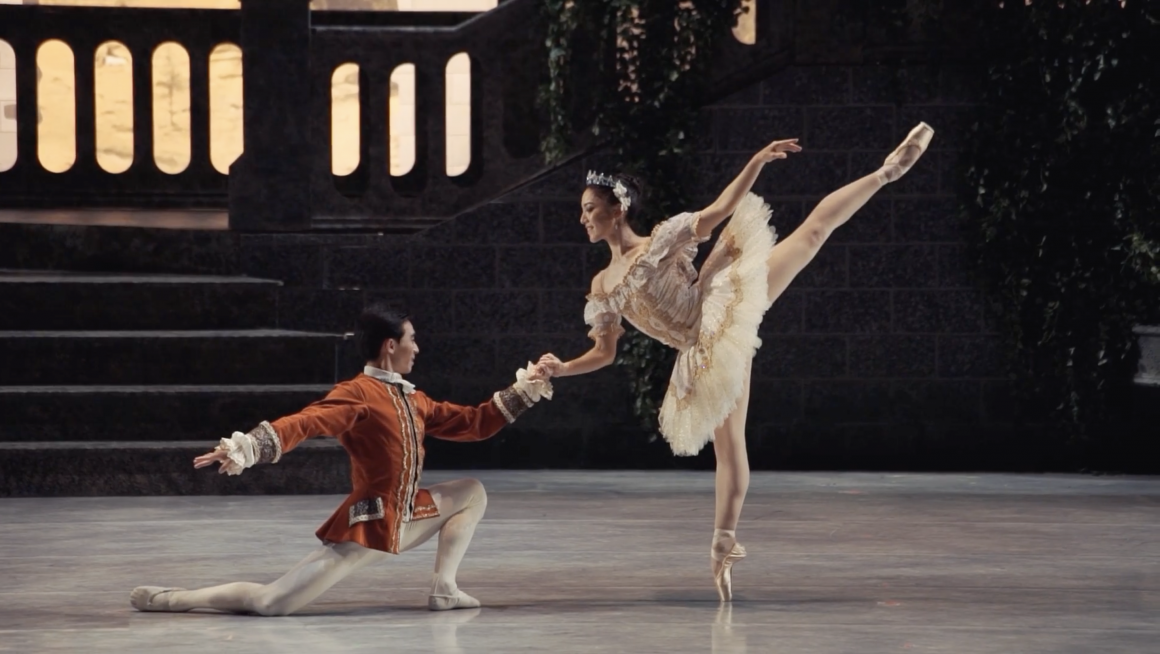
The Sleeping Beauty at Alberta Ballet: A dream come to life
By Ansharah Shakil, October 31 2023—
Sleeping Beauty is a classic fairytale, immortalized through the Disney animated film and numerous adaptations that came out of the original, far more disturbing Brothers’ Grimm story. The ballet based on the story was first completed by Tchaikovsky in 1889 and since then has become a world-famous production. After an initial run in 2018, Alberta Ballet has returned the ballet to its repertoire this year, performing the fairytale from Oct 26. to 28.
The Sleeping Beauty is Tchaikovsky’s longest ballet, at four hours, but it is common for this runtime to be cut to around two hours, as it was for Alberta Ballet’s rendition. Composed of a prologue and three acts, the ballet depicts Princess Aurora’s christening and the party to celebrate her birth that excludes the fairy Carabosse, who is then hell-bent on revenge and casts a spell on the princess which will lead to her death by pricked finger on her 20th birthday. The Lilac Fairy, Fairy of Wisdom, quickly lessens the impact of Carabosse’s spell by ensuring that Aurora will instead fall into a deep sleep. Prince Desire arrives in the sleeping kingdom a hundred years later, where the Lilac Fairy spurs him into finding Aurora. He overpowers Carabosse and awakens Aurora with a kiss on her forehead. The two’s wedding is celebrated with a Pas de Deux and guest appearances by other familiar fairytale characters like Little Red Riding Hood and Puss in Boots.
Opening night’s performance showcased Luna Sasaki as Princess Aurora, Lang Ma as Prince Desire, Mariko Kondo as the Lilac Fairy and Scotto Hamed-Ramos as Carabosse. Calgary students from Alberta Ballet School joined Alberta Ballet dancers onstage to provide a charming local vitality to the production.
As soon as the curtains rose, the stage, bathed in golden light, was as breathtaking as the elegantly-clad dancers in their shimmering costumes. The ballet’s backdrop, which displays Alberta’s Rocky Mountains, transformed the setting into something well-known and well-loved for many of us. It was almost impossible to know where to look: at the beautiful set design, the dazzling costumes, the astonishing athletic movements of the dancers’ feet or the complete spectacle of all the performances on stage.
Sasaki, reprising her role from 2018, made for a gorgeous Aurora, able to balance the endearing emotion of the character alongside the demanding, delicate technical choreography. The Sleeping Beauty is famous for its Rose Adagio sequence, an exceptionally difficult series of balances that Sasaki carried out beautifully, in which Aurora’s four suitors twirl Aurora, who stands en pointe and takes each suitor’s hand without ever coming off pointe, in a circle. While Sasaki’s body shook from the demands of her choreography, her form was pristine and powerful. Even her fall to sleep was graceful. Ma was likewise excellent, perfectly able to support his partner when they were dancing together and captivating on his own. Though Desire’s big moment — defeating Carabosse and Carabosse’s minions — fell a bit short, his wide-eyed passion in his dances with Aurora and the rest of the company in Act Two and Three made up for it. It’s no wonder that Sasaki and Ma are longtime dance partners; their chemistry leaped off stage, electric in every movement.
Of the characters, Hamed-Ramos as Carabosse was a standout delight, magnetic on stage, and the Lilac Fairy was a vision of gentle sophistication. The contrast between the introduction of both characters in the first act was established not only through their costuming — Carabosse in heavy velvet green and the Lilac Fairy in airy purple — but through the way they moved on stage in time to the music changes that signalled their arrivals. The flames sparking from Carabosse’s hands when he threatened the royal family startled and fascinated the audience each time, while the technical skill of the Lilac Fairy received as loud a round of applause as Aurora and Desire’s dances did, and as the fairy tale guests in Act Three did.
Beyond the leads, each of the dancers’ movements was not only in time with the music but were attuned to every beat of it so completely that they became instruments themselves, smooth and polished whether they were holding themselves still or statuesque-like figures in a painting, or whether they were soaring through the energetic motions of their choreography. The lifts and twirls of Desire and Aurora’s final grand Pas de Deux were beautifully moving; it was impossible not to relish in their happy ending. Just as Prince Desire falls in love with Aurora in the visions given to him by the Lilac Fairy, we fall in love with this ballet, full of heart and delicacy, like it’s a dream you never want to end.
To learn more about Alberta Ballet and their current season, visit their website here.
